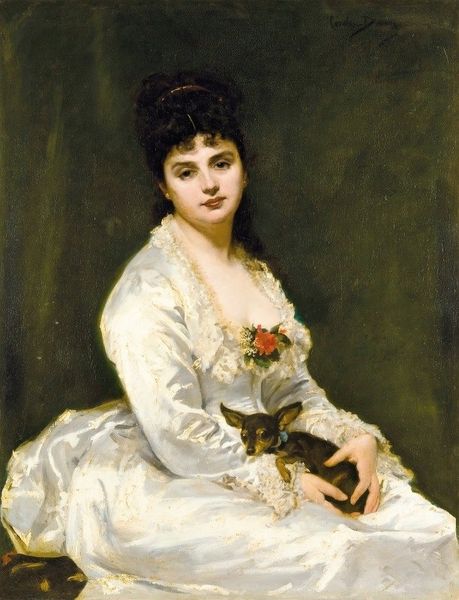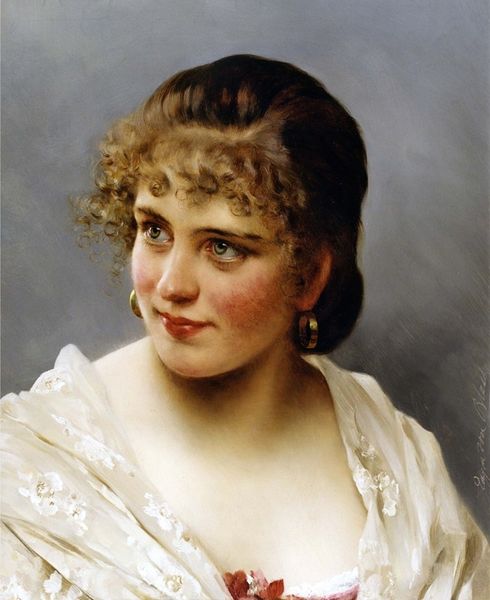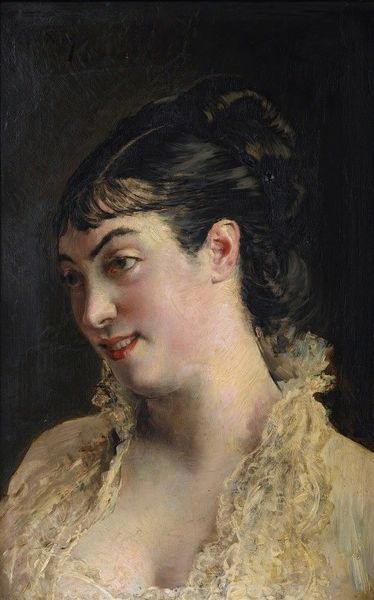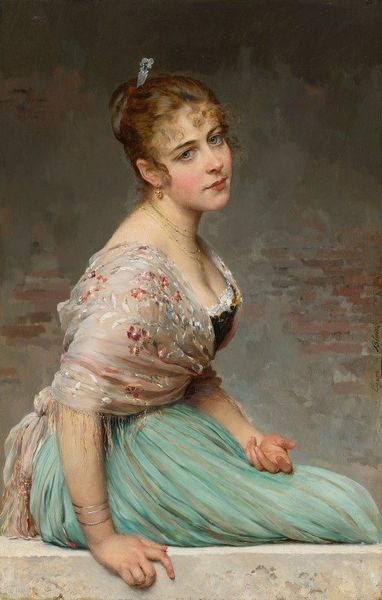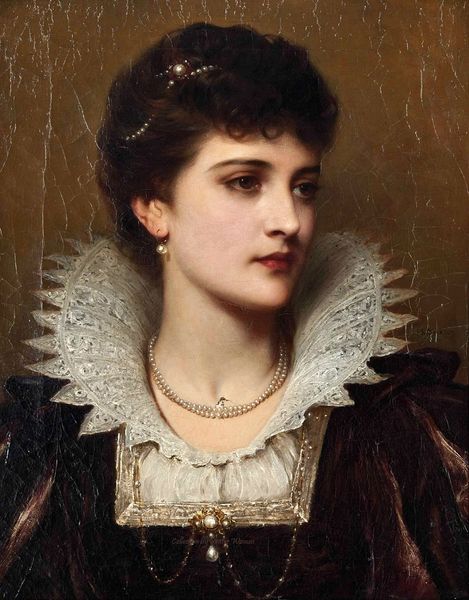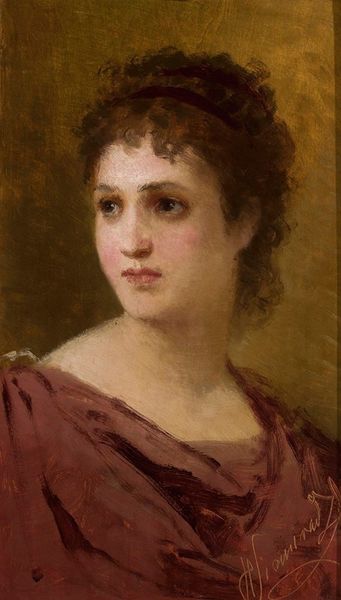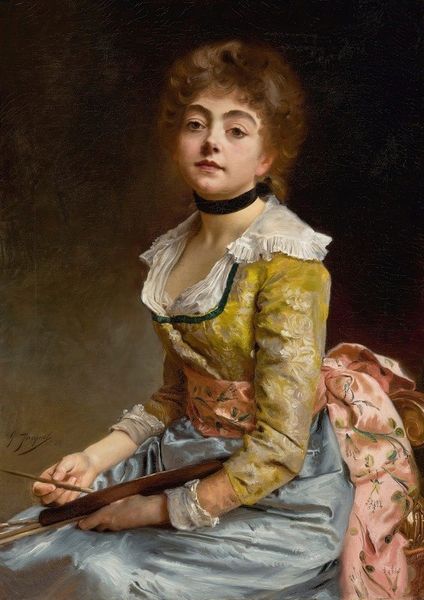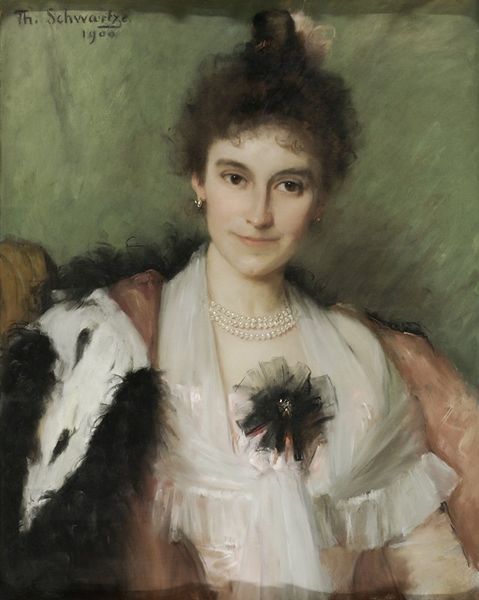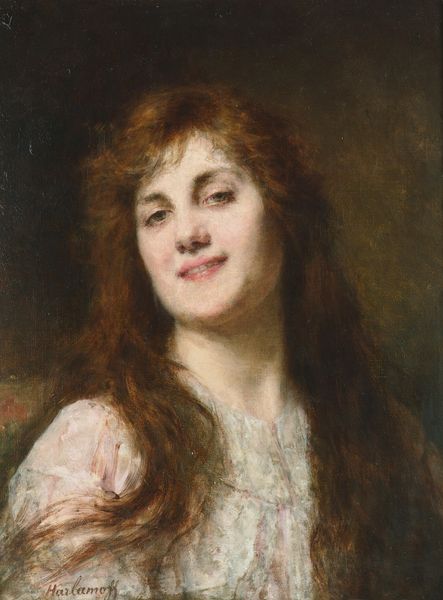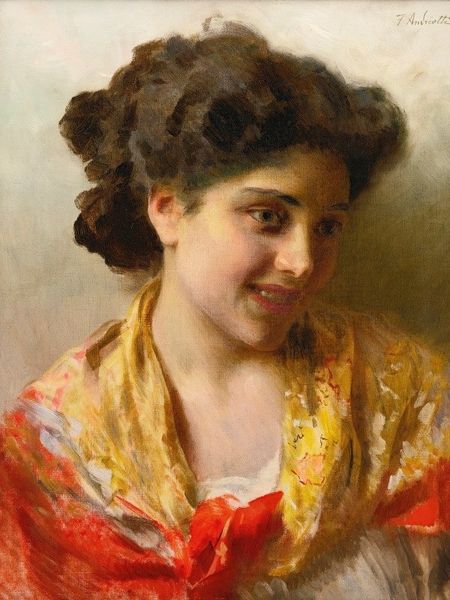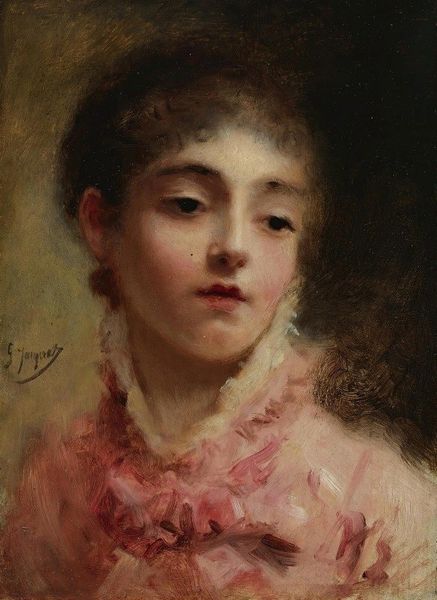
Copyright: Public Domain: Artvee
Curator: This is Vittorio Matteo Corcos’s “Portrait of a Young Lady,” painted in 1889. The work uses oil on canvas, portraying an unknown sitter. Editor: She certainly seems to float ethereally from the canvas. There’s almost a sepia softness to the color palette, with only her lips and cheeks exhibiting some color. Curator: Indeed, this softness creates a feeling of intimacy, drawing the viewer into the private world of the subject. Her gaze is engaging yet melancholic. Note the symbolic weight of her hand resting on her chest. It creates a feeling of vulnerability, of internal contemplation. Editor: What social narratives were Corcos interested in crafting? Was this a commissioned portrait for a bourgeois family, meant to signify elegance and gentle virtue? The fur stole reads as pure status, doesn't it? Curator: It speaks to affluence, surely. The rendering is soft, romantic even, almost as if designed to reflect the sensibilities and social position of his clientele. Consider the contrast with, say, the hard realism we saw at that time. Editor: This seems so far removed from political concerns. Do you find Corcos's decision to stay clear of major political movements typical for portraitists of his time? Or were artists consciously distancing themselves to maintain clientele from various social factions? Curator: I'm inclined to see this particular portrait as an intimate psychological study enabled by wealth. The romantic aesthetic here prioritizes emotion, not public declarations or civic lessons. Editor: Interesting. It makes one think about how “neutral” art always favors some viewpoints over others. But let us appreciate its aesthetic finesse. Curator: Exactly. It’s hard to dismiss his painterly expertise. Corcos really captures that romantic sensibility. What starts as simple charm evolves into something deeper if one takes the time to look carefully.
Comments
No comments
Be the first to comment and join the conversation on the ultimate creative platform.
